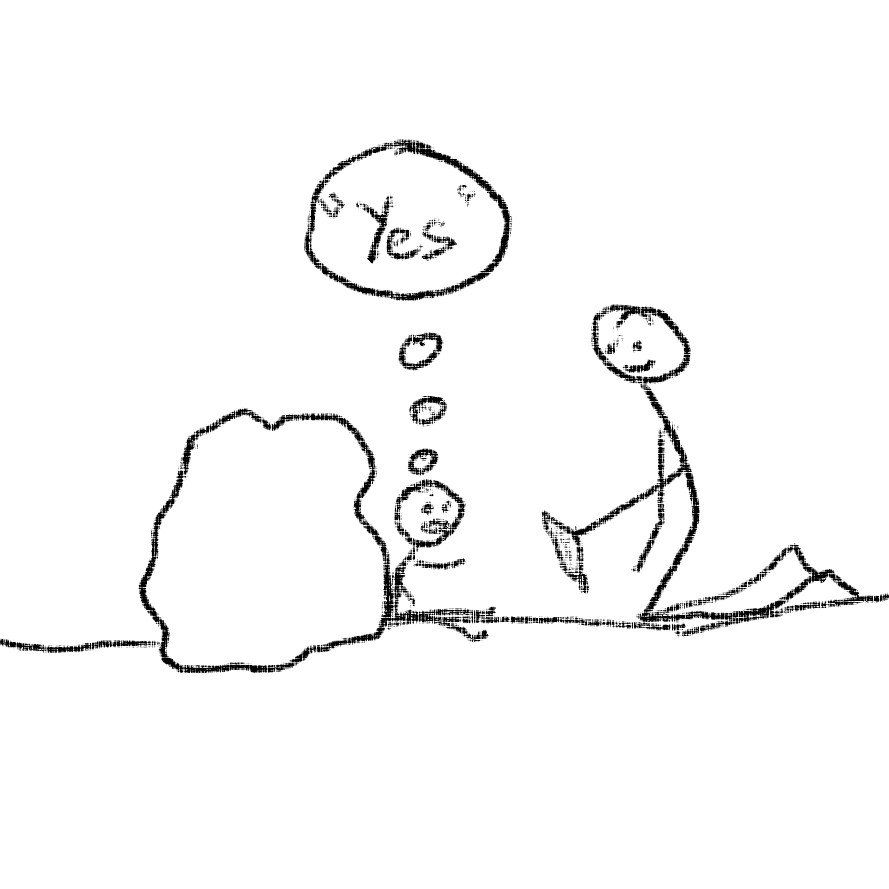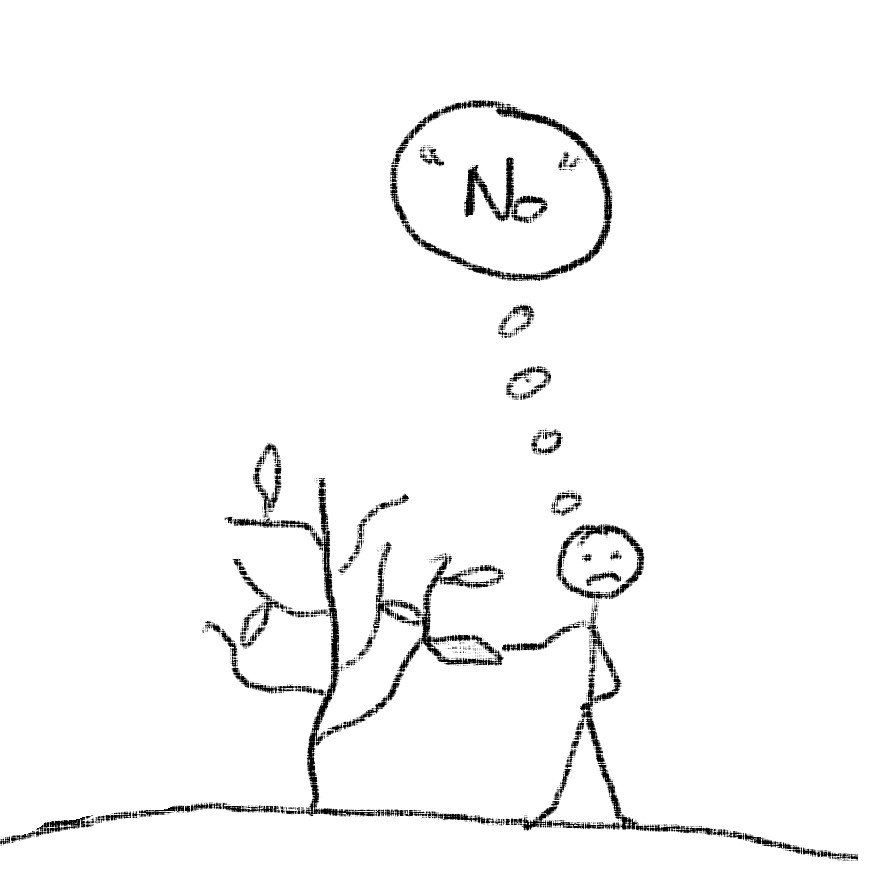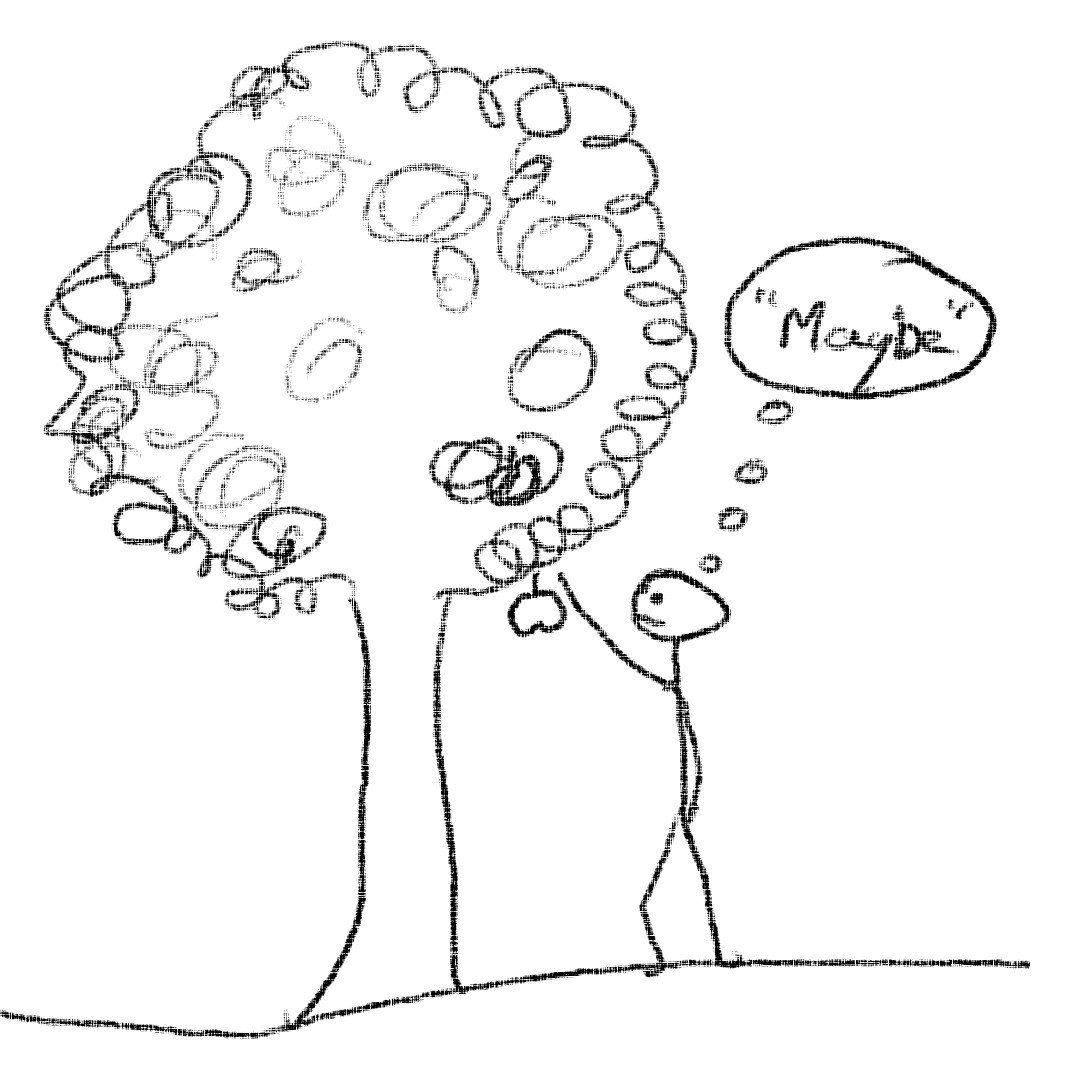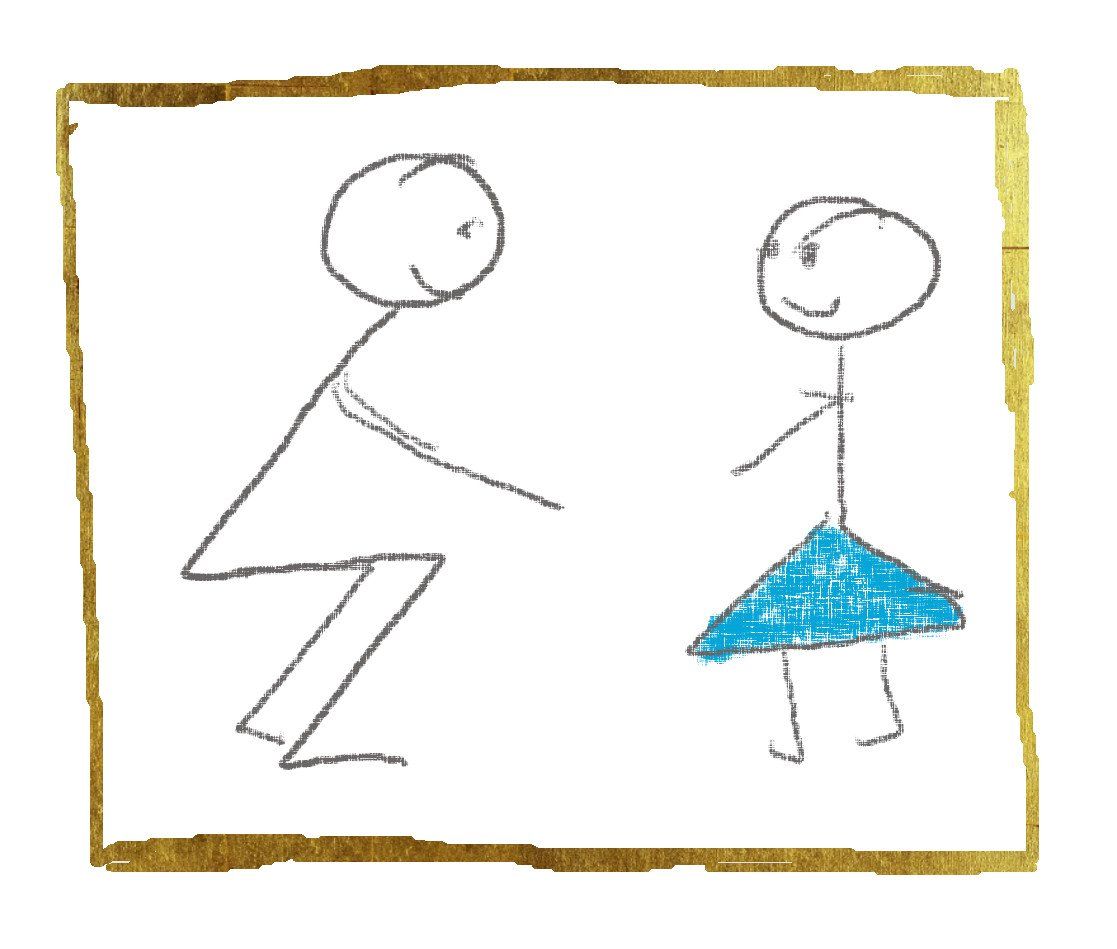
Are You...
Making Mealtimes A Battleground?
A Parent's Guide to Healthy Eating
Is your child a picky eater?
Or just trying to stay alive?
The modern world is robbing children of the chance to learn safely about food, while presenting them with an unprecedented range of foods to learn about.
Meanwhile, parents are under increasing pressure to get their children eating a balanced diet from an early age.
Do we ever stop and wonder what long term damage we cause when attempting to force our children to eat things their bodies are telling them not to?
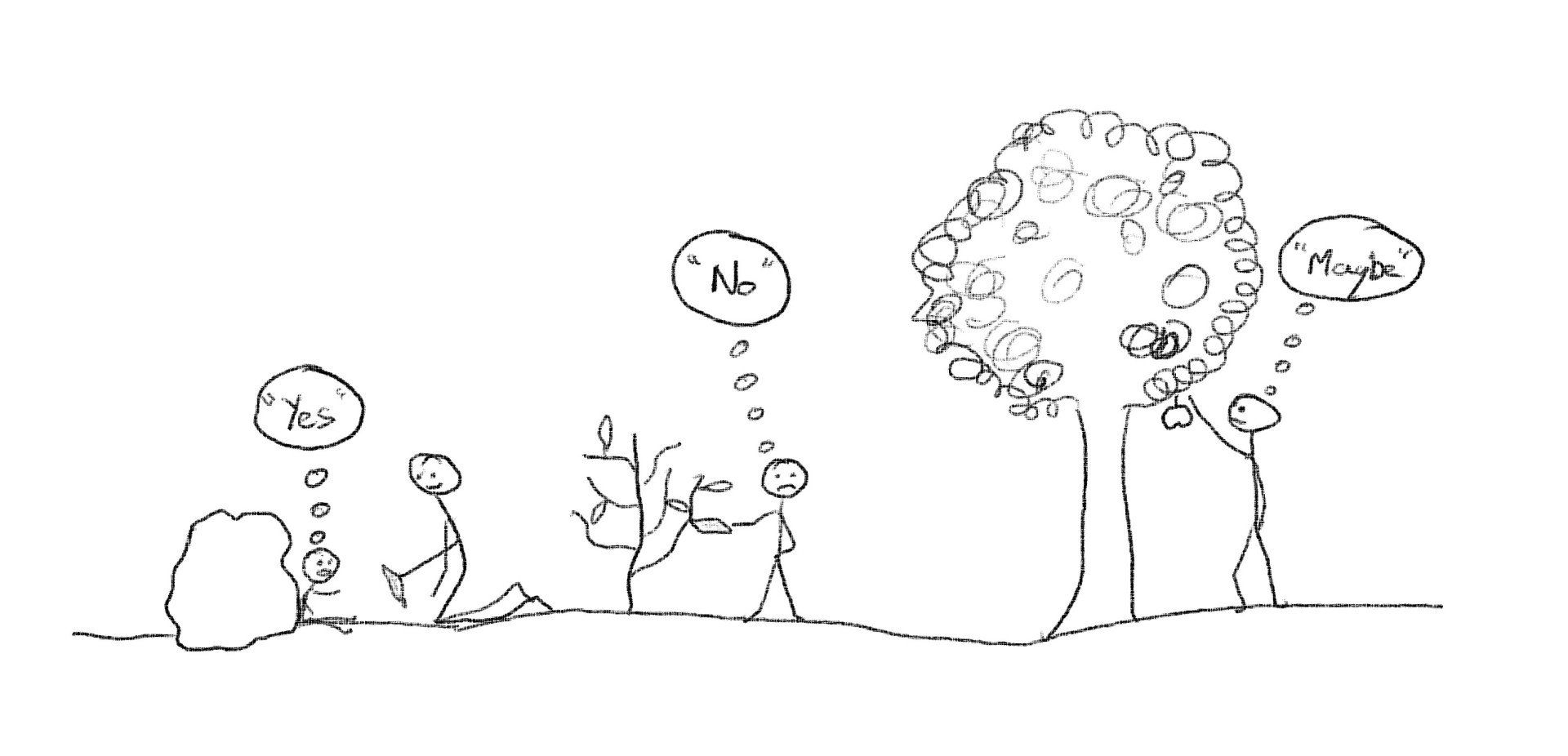
Children may be genetically programmed to reject certain types of food at a particular age.
As parents, we can diffuse the battles and help our children develop a healthy relationship to food by swapping sides, helping them build their defences and providing them with plentiful, safe learning opportunities.
Opportunities that don't involve them needing to put food in their mouths and swallowing it.
How Do You Know If You Won't Even Try It??!!!
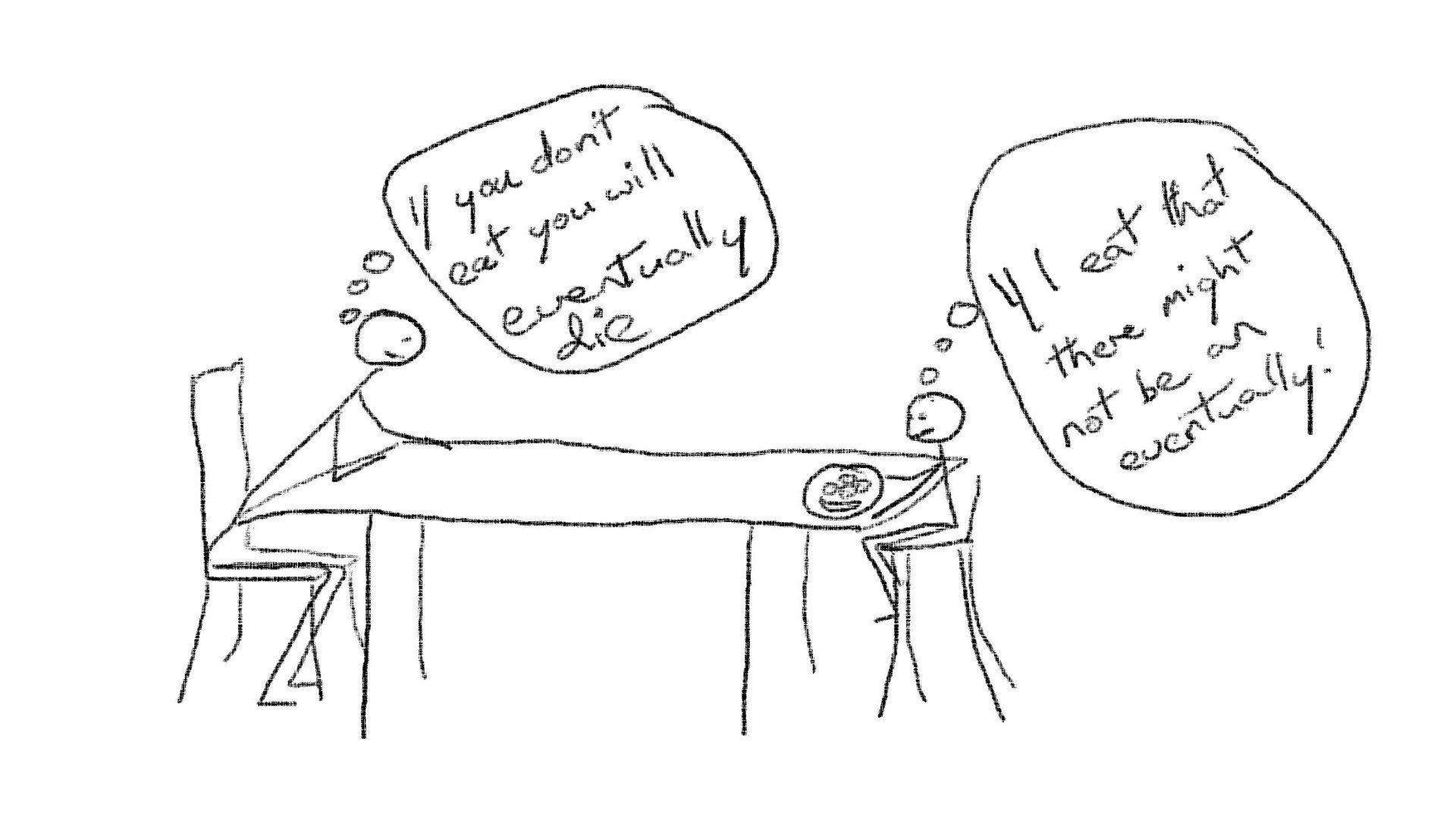
Learning to eat is literally a battle for survival, but not the one we, as parents, are typically focused on
Should we be chastising our children for being picky, or congratulating them on their instincts to stay alive?
When it comes to eating, we are typically focused on our children's long term health, but what if they are programmed to simply stay alive to the end of the day?
I am not a big fan of history, but there are times when even I accept it is helpful to look back and learn from our past.
It was not so very long ago that having an instinct avoid poisoning yourself was rather more important than "eating a rainbow".
Understanding what might be going on from our children's perspective can significantly help reduce our own anxieties and suppress our desire to step in and attempt to control their eating for them.
Do Adults Eat Too?
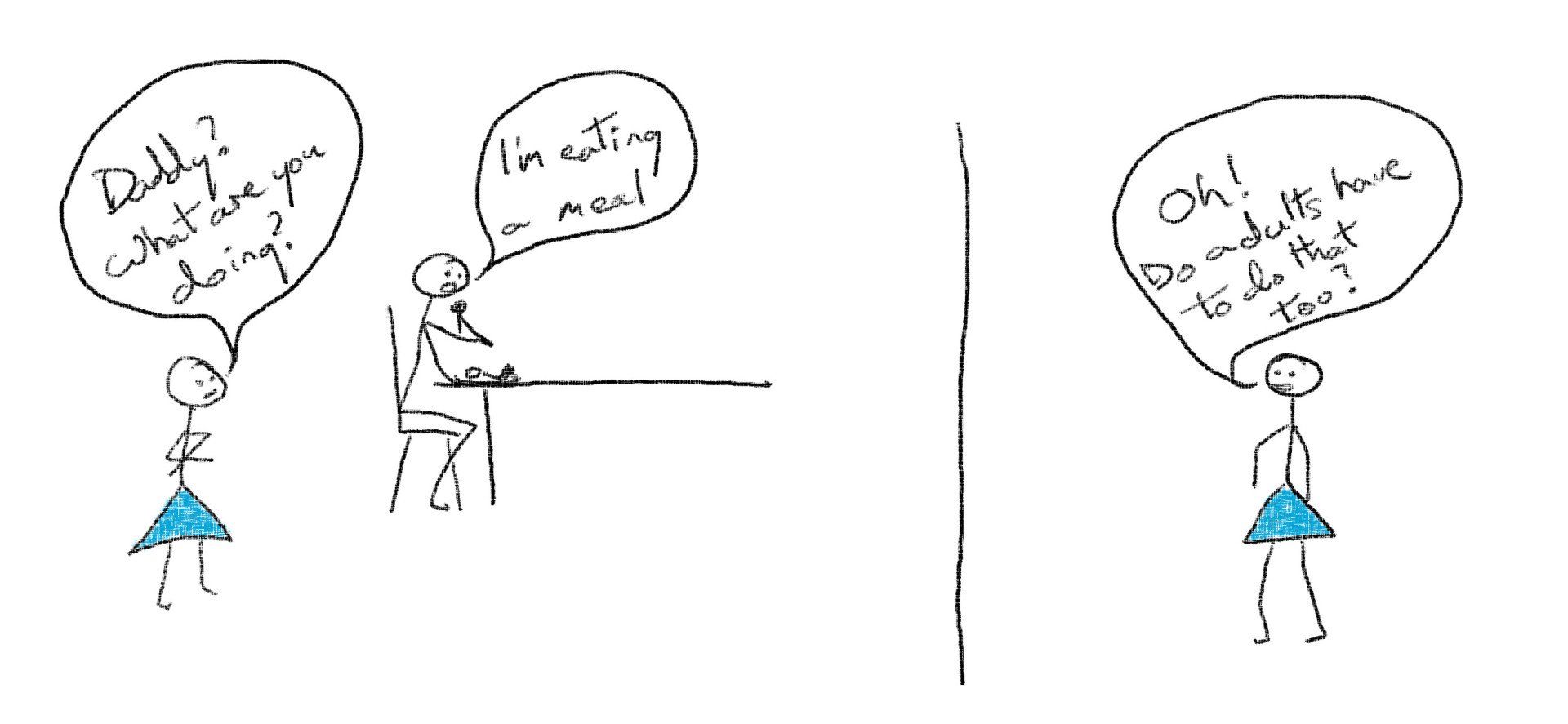
For many, family mealtimes are a thing of the past, yet how can children learn what is safe to eat if we don't show them?
Young children don't learn by being told, they learn by exploration, example and repetition. Has modern family life robbed them of that opportunity?
Only a generation or so ago family mealtimes were still the norm. Now, perhaps for the first time in human evolution, children frequently eat alone, or at best with other children.
This is to say nothing of no longer being involved in the hunting, gathering, butchering, farming or other aspects of food preparation and production.
If we accept that young children learn primarily through their hands and eyes, not their mouths, is it any wonder they no longer feel safe around food?
Should Children Have A PhD in World Food at 3?
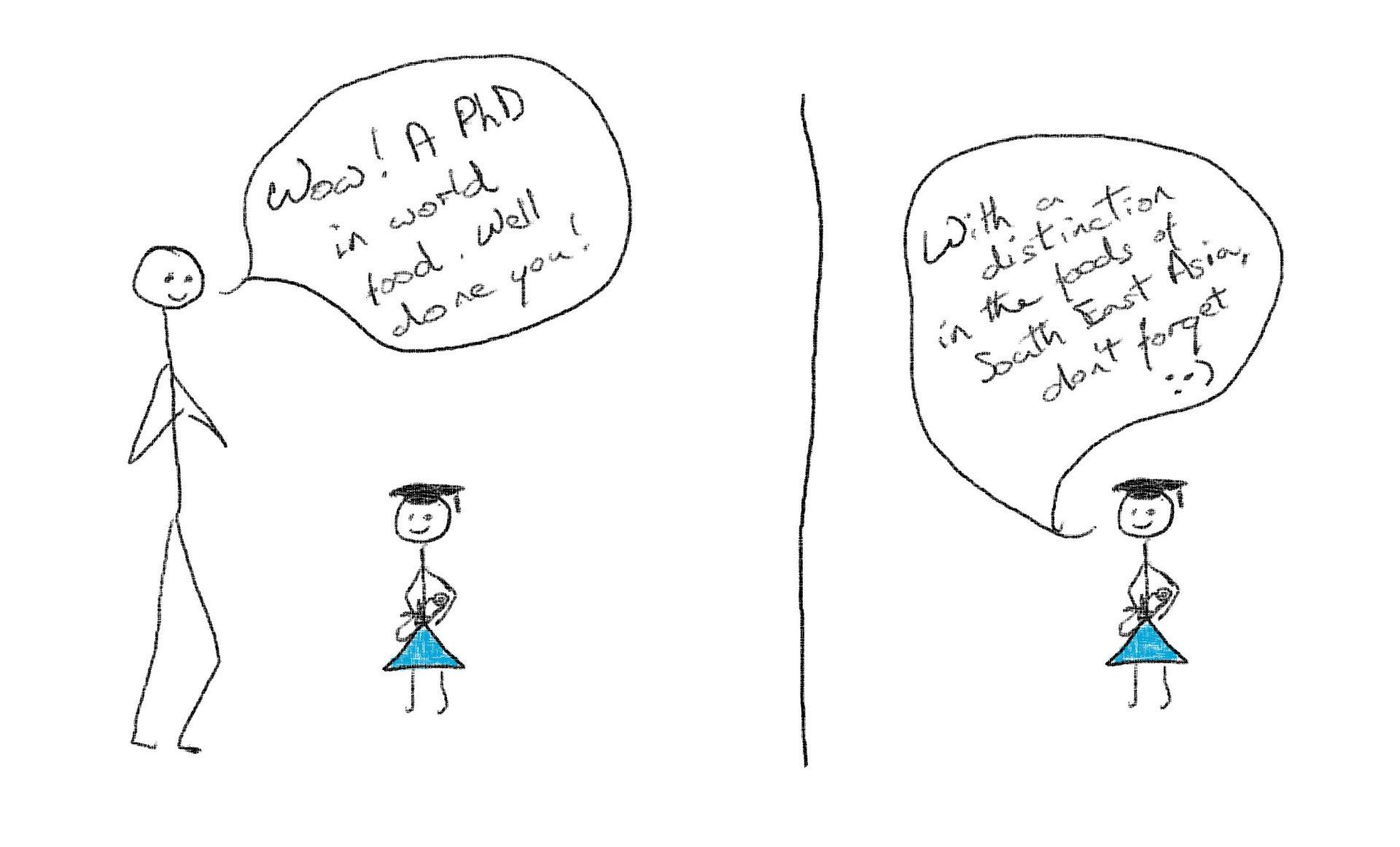
As adults we might love eating Chinese one day and Mexican the next, but do our children really need a PhD in world food at the age of 3
Throughout history, children would have seen the same restricted range of foods day in and day out, now no two meals need ever be the same.
One day our children will hopefully revel in the exploration of all the different foods our world has to offer.
For now their priority is to stay alive.
When faced with so much variety they are more likely than ever to restrict themselves to a small safe subset that is highly unlikely to include anything green or leafy!
What If We Get It Wrong?
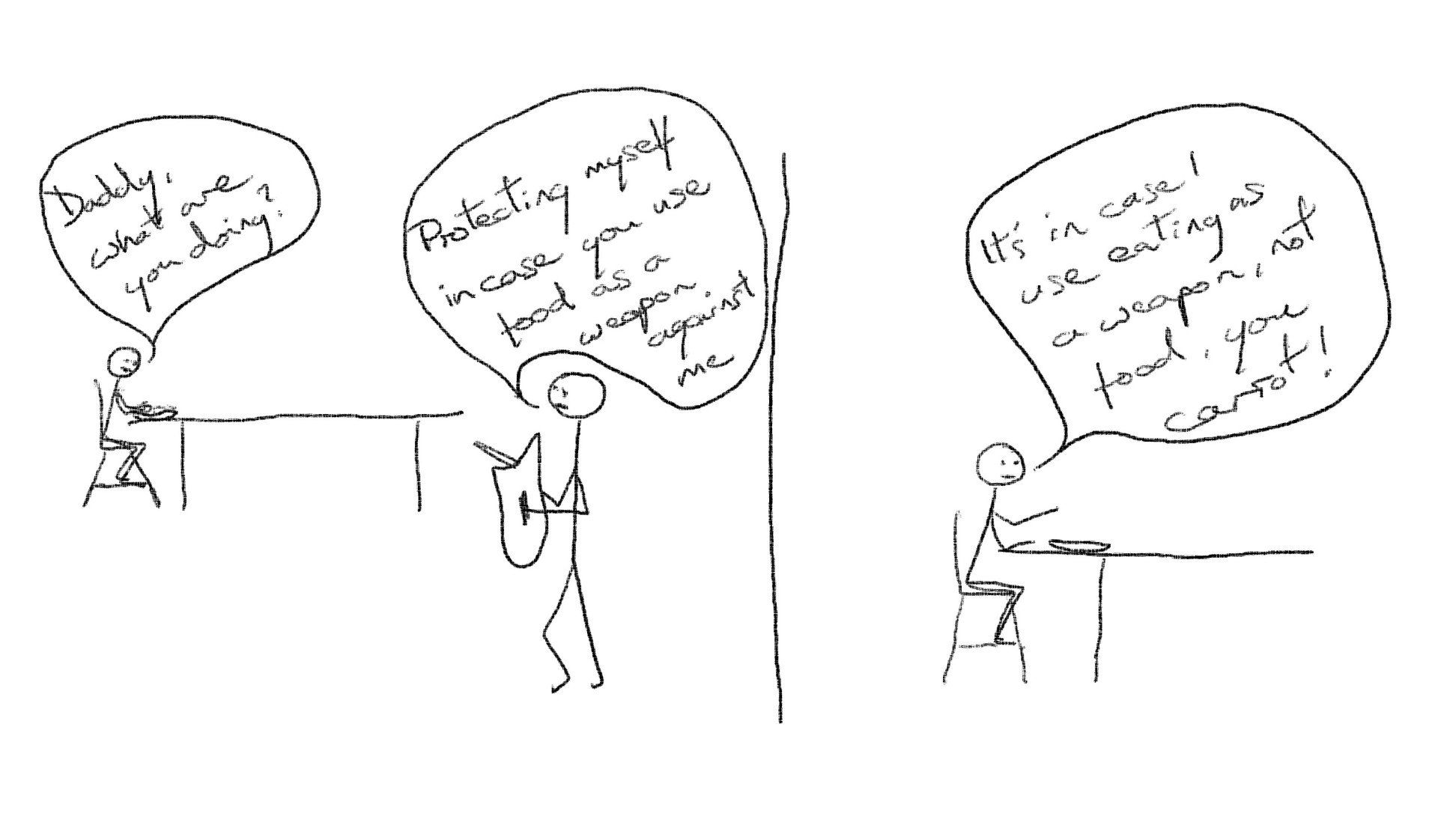
Do we ever pause to think about the long term damage we might be causing when we attempt to persuade, bribe or force our children to eat?
With eating disorders and obesity becoming a major public health issue, we need to understand the long term damage we might be causing.
For most children their bodies will tell them what to eat and how much.
Forcing children to eat what they don't want sets up a range of potential issues for the future, from breaking the link between what they eat and what their bodies are telling them they need to handing power to them which they can use against us for years to come.
Yes, No, Maybe....

Learn how to optimise your approach to the 3 stages of childhood eating
The "Yes" Phase - That brief golden period between weaning and becoming self mobile
As a parent it seems you can do no wrong, whatever you put in front of your children is picked up, smeared all over their faces and thrown on the floor.. who knows, they may even eat a little!
But who cares anyway, they are still getting most of their nutrients and energy from milk.
At this stage children are learning naturally about food.
We need to make the most of it because it doesn't last long.
The "No" Phase - The agonising period from when they become self-mobile to when they are old enough to reason about food
Remember we don't want them to put just any green leafy thing in their mouths, so let's not get too stressed if cabbage is not yet their favourite food.
How deep this phase goes and exactly how long it lasts is largely down to how well we did in the "Yes" phase, how much control our children feel they have over what goes in their mouths and how much chance they have to learn.
Discover how mantras can be used to help build their defences while finding safe learning opportunities that work for you as a family.
The "Maybe" Phase - The period where reason begins to play a role in food choice and where children may open up to new possibilities
The "No" phase is pure instinct, but at some stage the ability to reason about food kicks in. At this stage children may be prepared to try things they don't feel completely sure about.
How open our children are at this stage depends to some extent on their own personalities, but it is hugely influenced by how good a job we've done in both the "Yes" phase and the "No" phase.
When they do gradually start to open up it is important not to pounce.
Stay cool. After all, eating should be as natural a part of day to day life as walking down the road to school.
Introduction
As a parents we obviously want our children to grow up:
- eating a wide range of healthy and nutritious meals
- enjoying less healthy 'treats' in moderation
- maintaining a healthy weight
- avoiding potentially serious eating disorders
Most of us want our children to share our love of food and, ideally, relish the same foods we do.
So, where is it going wrong?
Why do our children remain so stubbornly picky?
How can we break through their defences?
Maybe you've heard that someone needs to try something 10, 20 or is it 30 times before they learn to like it?
But what on earth do you do if they won't even try it in the first place?!!!!!
IT'S DRIVING YOU MAD!!
Don't worry, you're not alone.
Don't worry, there is a way.
Don't worry... ??
Be happy??
Maybe. If not happy, then calm, respectful understanding is a good starting point.

Learning to eat is literally a battle for survival, but not the one we, as parents, are typically focused on
Our problem is we are focusing on the wrong battle.
As parents, our concern is that our children develop a taste for a broad range of nutritious healthy foods that will help them thrive.
As young children their only concern is to get to the end of the day alive.
Putting that leafy green thing in their mouths and swallowing it could be the last thing they ever do.
For the vast majority of human evolution food did not come neatly labelled and packaged from the supermarket.
It's not so long ago that we would have congratulated our children on their instinct for staying alive, not chastised them for being picky.
Until we understand and accept this we are likely to do far more harm than good.
But, why is it we need to learn this explicitly now when our parents and grandparents didn't?
Because, today, we face two massive challenges that didn't exist a generation or two ago:
- modern family life has robbed our children of the safe way to learn about food - through their eyes, hands and noses
- there is an explosion in the range of foods available to all of us on a daily basis, making the task of learning what is and isn't safe orders of magnitude more difficult
Learning to work with our children's survival instincts, rather than against them, is the key to success
Swap sides and help build your children's defences and eventually, when they feel in complete control, they will open up to new experiences.
Can you imagine dropping:
"How do you know if you don't even try it?"
in favour of:
"Don't eat anything you don't like."
"Don't eat anything you don't want."
These are the mantras I used with my daughter every single day for years.
Now, at the age of 6, I'm delighted to say, she has a genuine passion for an ever increasing range of different foods from cabbage, to curry, to chocolate.
You can achieve this too.
The approach outlined here will enable you to:
- Rapidly diffuse the battles and make mealtimes a more enjoyable experience for all concerned
- Gradually introduce a range of healthy new foods to your children's diet
- Regain a mutually respectful relationship
- Help to avoid potential long term eating disorders
Part 1 outlines:
- The three phases children go through when learning to eat:
- Yes
- No
- Maybe
- Why 'trying' things is one of the last steps in learning about food, not the first
- An absence of natural safe learning opportunities
- The vast range of foods available daily from all over the world
- Being exposed to a massive range of illnesses from around the world just at the time they are learning to avoid potential poisons
- Being weaned off milk too early
- Being weaned on food that bears little resemblance to adult food, especially in texture
Part 3
deals with:
- the potential long term damage caused by coercing children into eating things they don't like, want or feel safe with
- other things we do as parents that can potentially lead to long term eating disorders and how to avoid them
Part 4
provides a summary of the materials covered in parts 1 to 3 and the steps you can take to help your children develop a healthy relationship to food.
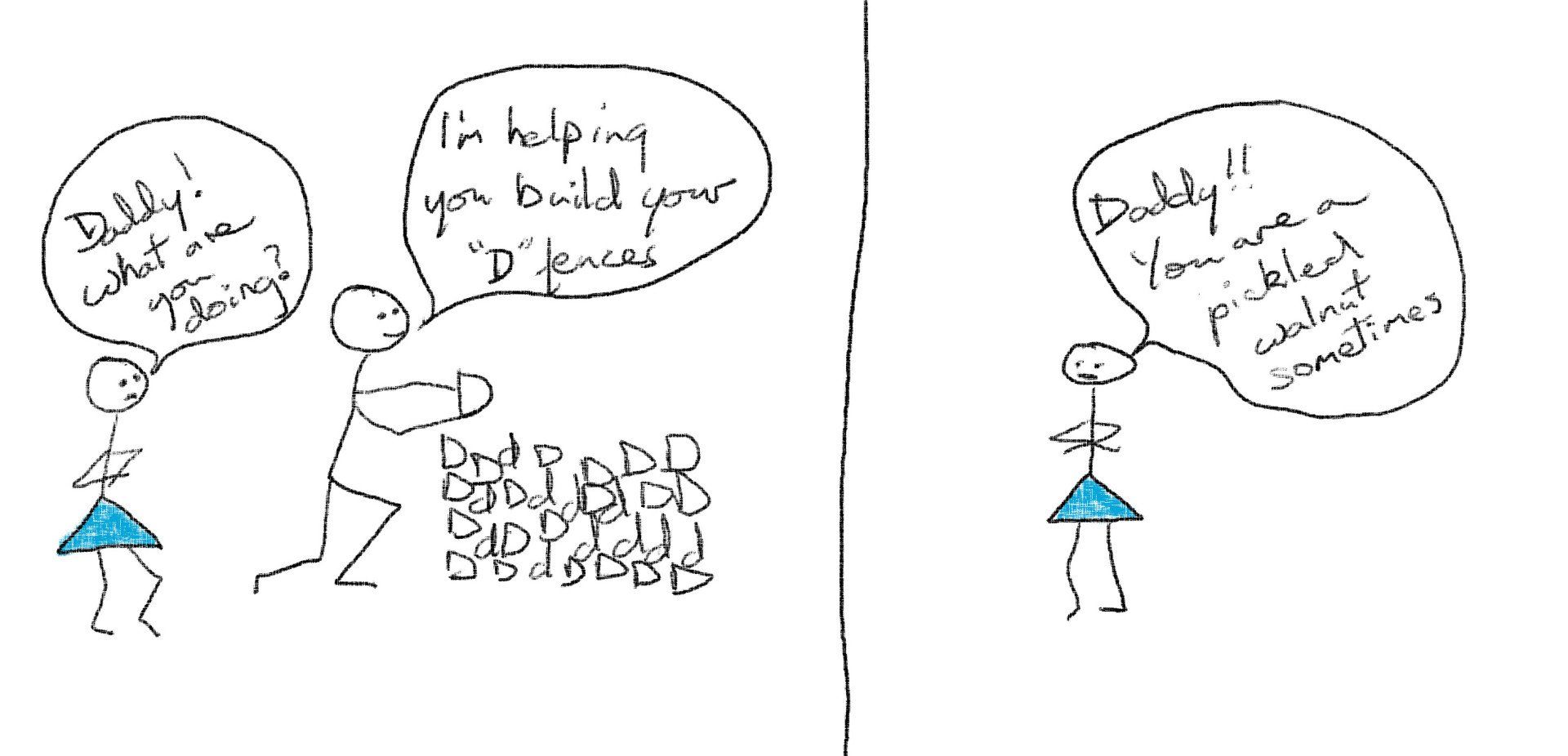
What I can't promise is to make it easy, especially in the early days when progress will naturally feel painfully slow and anxiety levels will remain high.
My daily mantras were not just for my daughter they were for my benefit too.
It takes a leap of faith and great self-control to swap sides and trust that all will be well.
Part 1: The Three Phases of Learning To Eat
I believe most modern parents will automatically recognise the three phases of learning to eat.
Phase 1
is the brief honeymoon period that starts when we first attempt to wean our children on to solid foods. I call it simply the 'Yes'
phase.
It seems they will happily accept anything we put in front of them.
They pick it up, squish it, smear it all over their faces and every now and again actually manage to put some of it in their mouths. Who knows, they might even swallow some of it.
How much they actually swallow doesn't seem to matter that much, after all they're still getting most of their nutrients from milk and they're only learning, bless them.
What a shock to the system it is when at about a year old they move to phase 2.
Phase 2
is that long drawn out phase that seems to go on forever where the answer to any attempt to introduce anything new is a firm and unyielding 'No'.
What makes it feel 10 times worse is when previously accepted, even loved, foods are simply rejected out of hand.
Didn't someone warn us that toddlers could become very picky?
But, nothing quite prepares us for the emotions we feel as a parent when our little darlings stubbornly resist every attempt at coercion, restricting themselves to a increasingly narrow range of foods.
From this point on, for many parents, mealtimes are either a battleground of negative emotion, or a capitulation, preparing the same simple, but acceptable, food day in and day out.
Emotions can range from feeling completely powerless, to feelings of self-loathing, as you try desperately to coerce your darling children to JUST TRY IT!!!!
Imagine how it must feel for our children. The stress mealtimes can cause is immense.
Thankfully, at some point, things begin to ease up a little as children move to phase 3.
Phase 3
is the rest of their lives, the 'Maybe'
phase, where they gradually open up to trying new things.
Just how quickly children move to phase 3 and how open they become depends a lot on what we do as parents in phases 1 and 2.
My Personal 'Road to Damascus' Moment
I firmly believe that to learn how to help our children through these three phases it helps to imagine where they might come from.
My personal 'Road to Damascus' moment came one day when I picked my daughter up from pre-school after lunch.
Over breakfast that morning we had been going through her 'Encyclopedia of the Human Body'. As usual she was fascinated by where babies come from and how our digestive system works. Amongst other things, like how 'poo' is formed, we had talked about how food was essential to stay alive.
As is often the case, a little knowledge can be a dangerous thing.
It was usual, at that age, for my daughter to put up a bit of a protest when dropping her off at pre-school, but when I picked her up she was normally delighted to see me.
This day, when I picked her up she was in floods of tears. When she eventually calmed down I asked her what was wrong. She said:
"It was pasta for lunch today. I don't like pasta so I didn't eat it. Am I going to die, Daddy?"
Obviously, my first instincts were to reassure her that we do not die just because we skipped one meal.
It was only later that day that I reflected on just what powerful forces there must be at work.
Her determination not to eat something she 'didn't like' was so strong that it overcame her new found understanding that she might die as a result.
What could be so powerful?
A Battle For Survival
It seems so obvious once you think about it.
Eating things you are not totally sure are safe can kill you.
We have learnt to accept that things sold as food are unlikely to poison us, at least in the short term.
Young children have no such knowledge.
Forget about 'eating a rainbow', this is serious stuff.
Our History as Hunter Gatherers
To understand what is going on for our young children, it helps to imagine ourselves outside our cosy, safe, modern world where food is bought from a supermarket and lovingly prepared at home, back a few thousand years to the world of our genetic heritage. A world of hunter gatherers where both food and poisons were all around us, but without neat little labels to tell us what was what.
It doesn't take a huge leap of imagination to see, that for a toddler, stumbling around in this world for the first time, having an instinct NOT to put that leafy green thing in your mouth, might be the key to still being alive at the end of the day.
Our need to see our children eating a range of healthy and nutritious foods is massively trumped by their need just to stay alive.

If we extend our imaginations a little further it would seem to make sense of the three phases we observe.
In our hunter gatherer past a pre-mobile children would be totally dependent on their parents to give them food and therefore were programmed to accept whatever was offered. This is phase 1, or the 'Yes' phase.
The moment they became self mobile they enter phase 2 and everything changes. Surely our hunter gatherer parents were far more concerned that their children didn't put anything in their mouths that they weren't sure of, than they were about them eating a healthy nutritious diet.
Rather than chastise them for being so picky they would have congratulated them on their instinct to stay alive.
Gradually their children will have reached phase 3, a point where they were old enough to have learnt what was safe and what wasn't and what to do if they weren't sure one way or the other.
What We Can Learn From Survival Experts
In order to understand how we might help our children through the three phases it's worth considering what we can learn about survival.
Survival experts will tell you that when learning about a potential new food source in the wild, the very last thing you do is put it in your mouth and swallow it!
In our modern world we have become so divorced from this reality that we see putting food in our mouths and swallowing it... what we call 'trying it'... as the first step in the discovery of a new food, not the last.
Survival experts will tell you that we learn about new food through our eyes, our noses and our hands before we put it anywhere near our sensitive mouths.
If we can handle the potential food and it's juices without a reaction from our skin then in time we can touch it to the inside of our lip to see if that is safe. Next we might put a small amount in our mouths and spit it out. If we survive that unscathed, we might swallow a small amount. Each of these phases of exploration take time. We need to wait days in between each one to make sure a reaction doesn't develop and we might repeat each several times, just to be sure.
Finally, if we feel it is safe to do so we gradually increase the quantity we eat. It is not safe to automatically assume that because you survived a small amount you will survive a large amount.
Of course, we can also learn by observing others eating. If we watch them eat something and survive the process enough times we can assume it's safe for us to give it a go ourselves.
My argument is that our children are genetically programmed to learn this same way, a way that most of us as adults have long forgotten.
When we put a new food in front of them and 'quietly' scream...
"But, how do you know, you haven't even tried it!!!??"
To us it is something delicious and nutritious, something we're convinced they would love, if only they would try it.
To them, we are asking them to bypass their learning process and put something in their mouths that, for all they know, might kill them.
Helping Children Feel Safe
Hopefully, by now, it is becoming obvious that 'trying' something should be one of the last stages of learning about a new food, not the first.
As parents we need to swap sides and help them feel safe.
Only when children feel in complete control of what goes into their mouths and are given sufficient safe opportunities to learn about food will they gradually open up to new experiences.
It all sounds simple enough and for most of history it probably was.
Unfortunately, modern family life and eating habits have transpired to make life far more difficult than they have been at any point in history.
We need to understand why before finally working out what to do.
Remember, young children do not refuse to eat things just to wind us up!
Created 12/03/2019
Last Updated 06/04/2019

